Written by Lorrie Reynolds
Categories
One of the most frequently asked questions in trick training is “What is a behavior chain?” One of the reasons this concept is so confusing is that behaviorists and trick trainers use this term very differently. The Applied Behavior Analysis (ABA) definition of a behavior chain is: “Behavior chains are sequences of individual behaviors that when linked together form a terminal behavior.” In this definition, a sequence of related behaviors are strung together to form a final behavior. Contextual cues keep the chain going. In other words, each small piece of the behavior becomes a cue for the next piece.
Let’s take an example from agility. In ABA terms, a correct 2 on/2 off contact performance is a behavior chain. The dog runs up and over the contact, decelerates, puts two feet on the ground while keeping two feet on the contact obstacle, and then waits for a release. The separate behaviors of running up and over, decelerating, and getting into position are related but separate behaviors. The dog has to go over the contact obstacle to get into the 2 on/2 off position. The end of the contact becomes a contextual cue for moving into position. This sequence is often taught by back-chaining (which is a topic for a future post).
For trick trainers, a behavior chain is two or more separate and unrelated tricks.
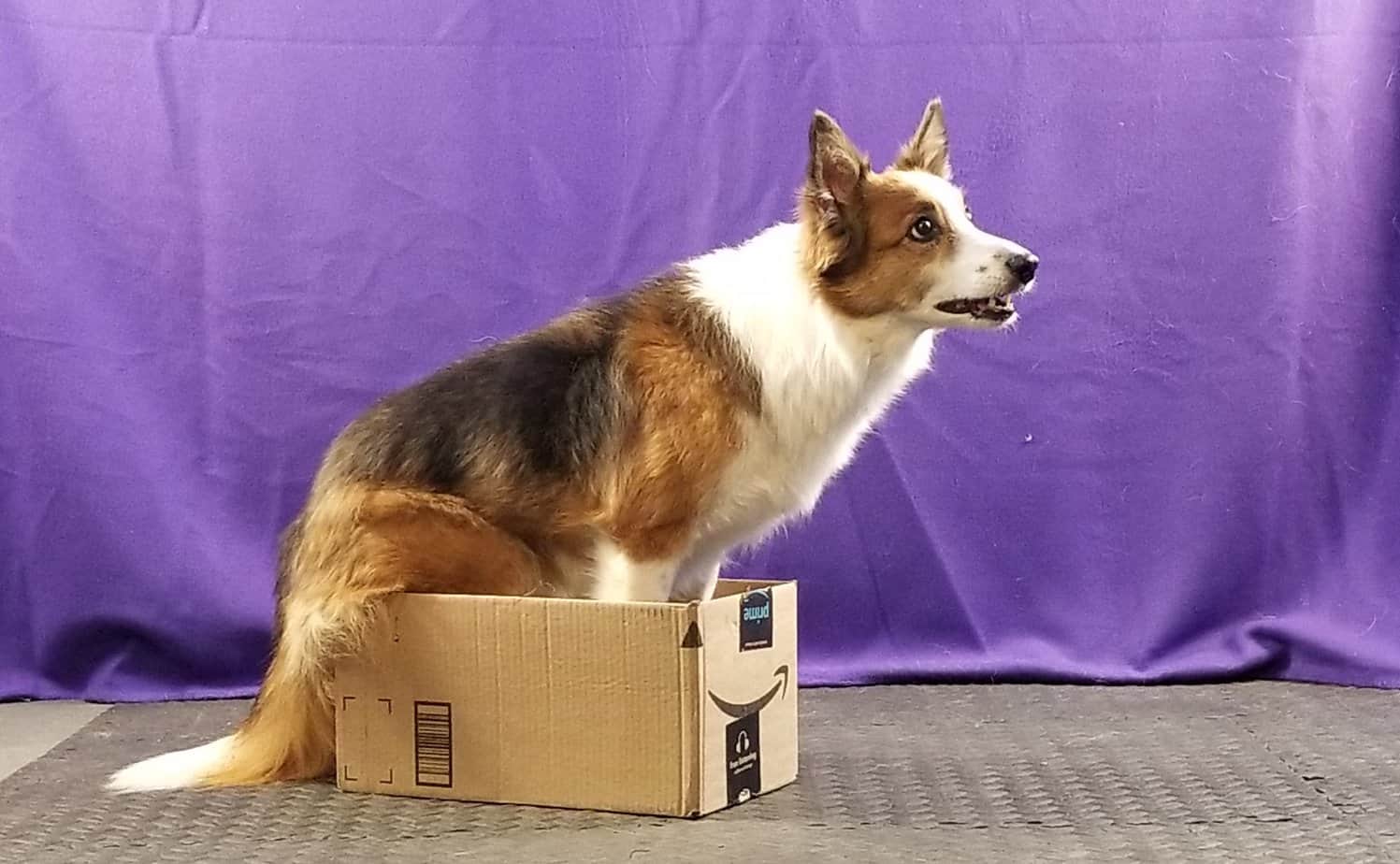
The confusion arises because the definition of a “trick” in the trick organization’s terms is based on lumping related behaviors together. “Fetch” is considered a single trick. In ABA terms, it is a behavior chain (go get the ball, pick it up, and bring it back), but it is lumped into a single “trick” by the organization. This makes it difficult for the trick trainers to determine what the trick organization truly considers a “chain.”
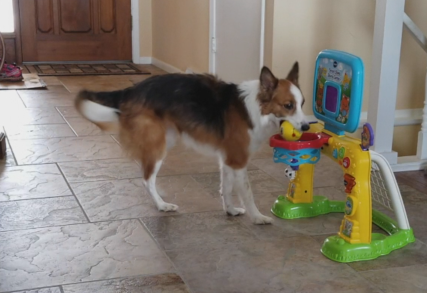
Let’s go back to the trick training behavior chain definition. Trick trainers consider a behavior chain two or more separate and unrelated “tricks” performed on a single verbal or hand signal cue. The key words here are “separate” and “unrelated.” Let’s look at some examples.
Cueing the dog to “hit the tap light” and then having the dog jump up on a bench and hit the light would not be considered a behavior chain to the trick world. Why? Because there is really only one trick being performed, and that is to hit the light. When a dog is taught to “do something” like a tap light, they should do that “something” no matter where it is located. Getting to the light isn’t considered a separate behavior, it is just required to get into a position to tap the light.
For example, if a dog was standing in front of the crate and the light was inside the crate when the handler cued the dog to hit it, “going in a crate and hitting a light” would not be a chain. Why? Because the dog would do the same thing no matter where the light was. If it was on a bed, or on the floor, or in a crate, or on the other side of the room, hit it would mean the same thing. It isn’t teaching two separate behaviors that occur on one cue, it is teaching one action that will be performed anywhere. Where the dog has to move to perform the trick is irrelevant.
Interestingly, if the sequence is turned around, and the handler cues “go to bed” resulting in the dog moving *away* from the crate to hit the light and then going to bed, that is considered a chain. There is no natural connection between walking away to hit the light and then going into the crate. In the bench example, if the handler said “bench” and the dog walked away and hit the light, and then turned and jumped onto a bench, that would also be considered a chain. The behaviors are no longer related – the dog is not moving to the crate or bench in order to perform the trick (hitting the light), he is performing the trick and THEN moving to the crate or bench, a completely unrelated trick.
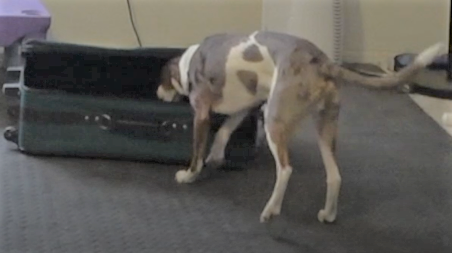
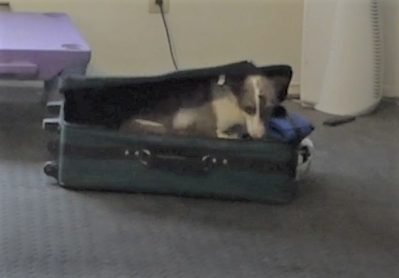
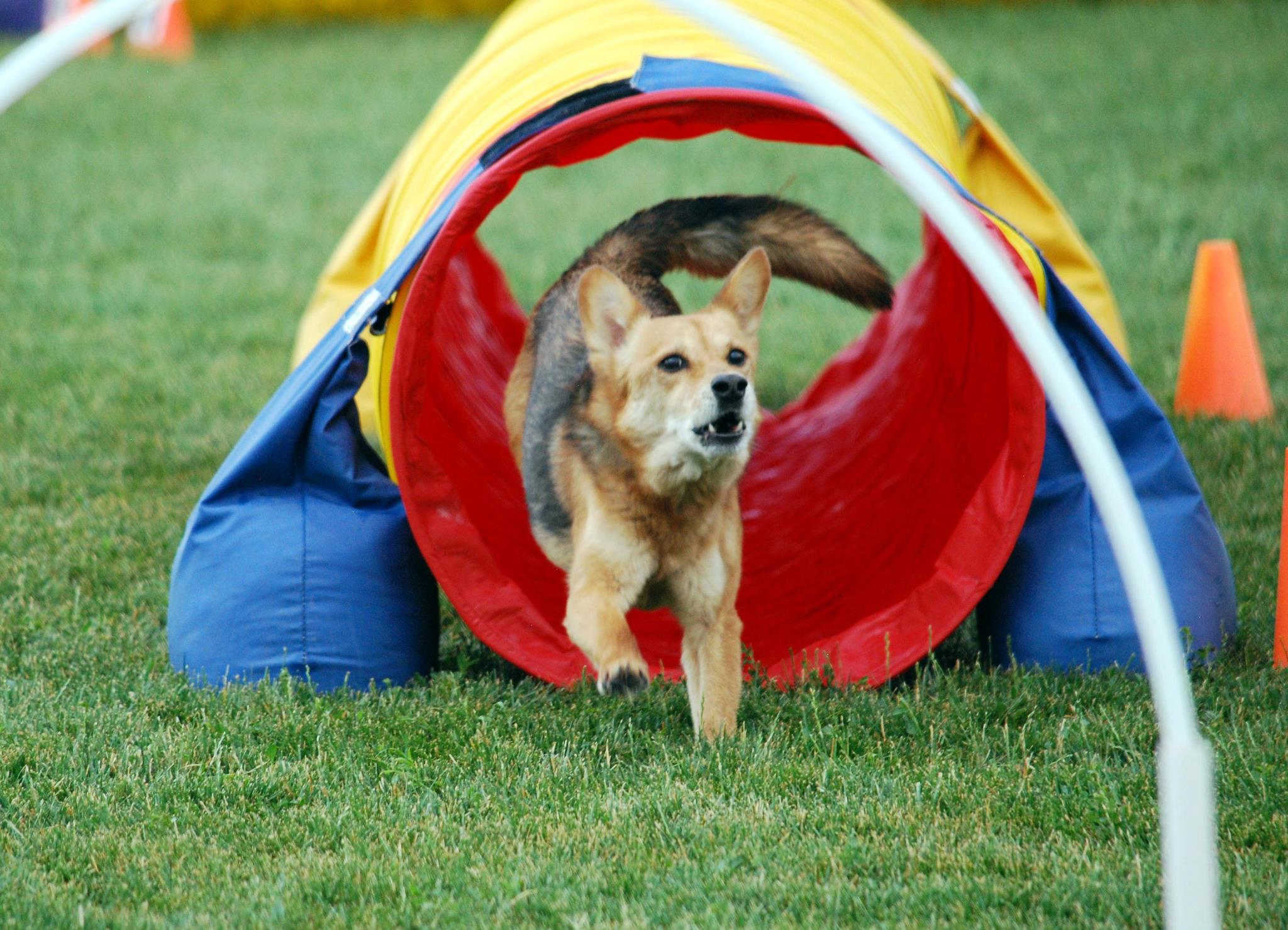
Another interesting example of what is not considered a chain is an agility dog being sent to a tunnel and completing obstacles along the way. If the handler is 50′ from a tunnel and tells the dog “go tunnel,” a trained dog will perform the jump and the weaves that are on the way to that tunnel. That does not mean it is a chain – the cue “go tunnel” doesn’t always mean sequence jump-weave-tunnel with no extra inputs. It just means that in order to get to the thing the dog was asked to do, she has to perform the obstacles in between.
A third example is the “trick” sit pretty or beg. If the dog is standing and is cued to sit pretty, the action of sitting and then sitting up on the back legs is not considered a chain because the dog has to sit to get into position to bring their front legs up off the ground.
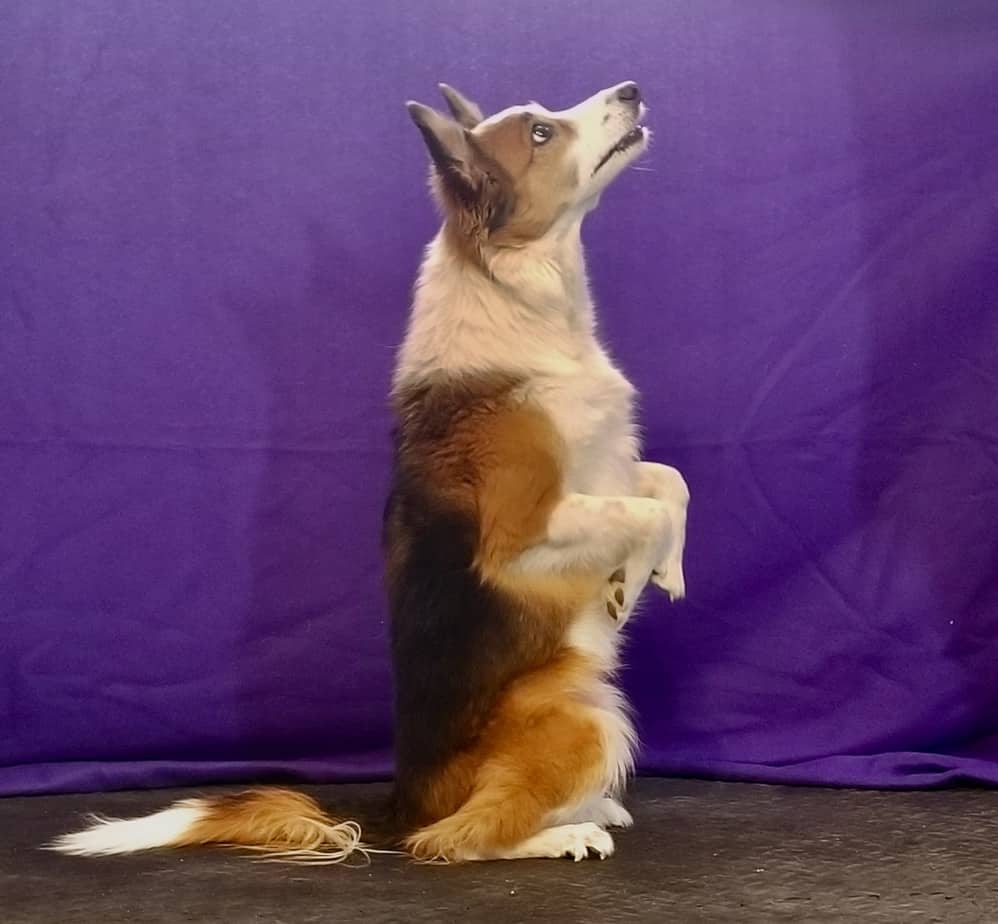
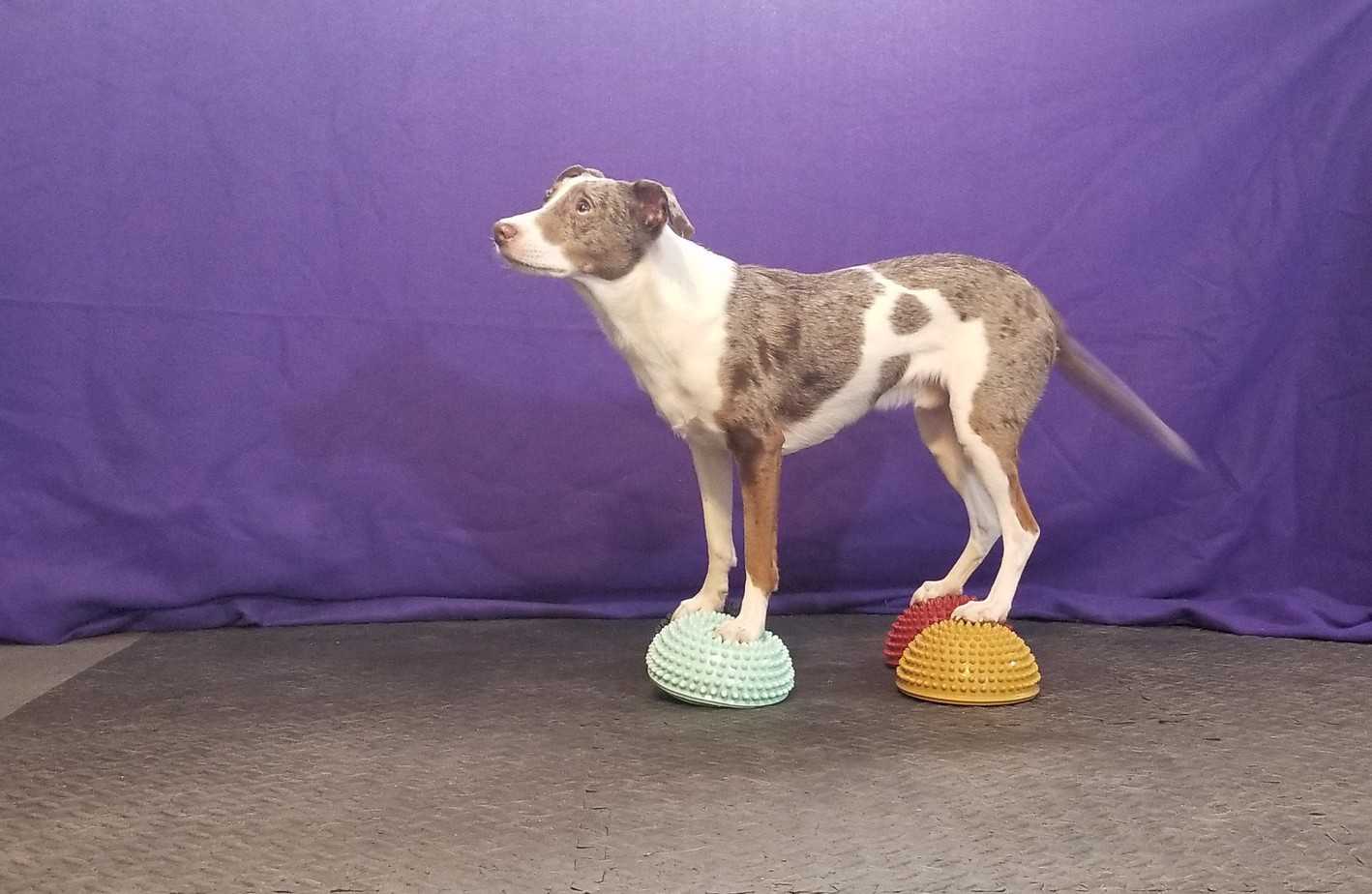
Here are some examples that trick trainers do consider behavior chains if they are performed on a single verbal or hand signal cue at the beginning of the sequence:
-
- Open the mailbox and fetch the mail
- Fetch or catch a ball and drop it through a hoop
- Pick up a toy and put it in the toybox
- Roll out a yoga mat and take a bow
- Open a crate, get in, and close the crate
- Open a suitcase, get in, and lie down
- Say your prayers and get into bed
- Close a door and wipe your paws
- Open the refrigerator door, grab a soda, bring it to handler, and close the door
- Roll in a blanket
- Tap a light and get into bed
Here are some examples that are not considered behavior chains:
-
- Moonwalk (back up in a down or bow position) – dog has to be in a bow or down position to start the trick
- Scoot (photos shown) – because it is all one motion
- Fetch to hand
- Front (come to handler and sit) – coming to the handler is just the location of the sit
- Jump on a pedestal and tap a light – the tap light is the trick, where the dog goes to perform it is irrelevant
- Go in a crate and tap a light
- Agility sequences – because they are cued by non-verbal motion or position of the obstacles relative to the handler
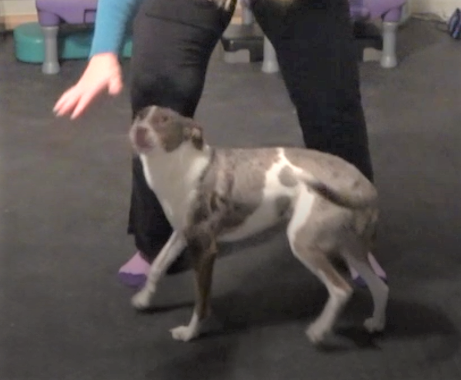
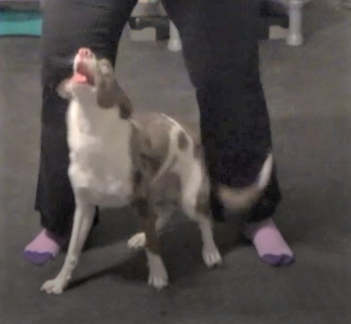
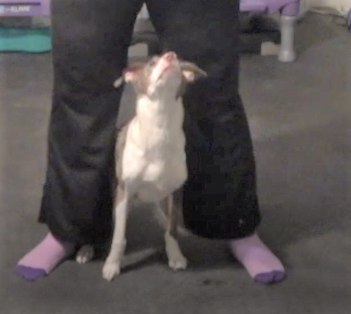
Being confused by the term “behavior chain” is understandable since the trick and behavior science worlds have such different definitions. It might be easier to think of the trick definition as “trick combinations” of separate and unrelated tricks. If in doubt, it is always best to ask the organization involved.
Behavior chains are one of the elements of the Do More With Your Dog Trick Dog Champion Title. The advanced titles are explained in my blog post here: http://www.maximumfundogs.com/dmwyd-advanced-titles
You Might Also Like…
Five Ways to Crush It at Your Next Dog Agility Seminar
Going to a dog agility training seminar? Check out these five tips to maximize your return on investment!
Read This Before Deciding on Your Agility Dog’s Contact Performance
Which contact performance, running or stopped, is right for your team? The answer might surprise you.
Is Your Agility Dog a Pinto or a Ferrari?
If you’ve moved up from a slow or moderately-fast agility dog to a speed racer, here’s some advice to make your life easier.
Get tips, stories, discounts, and early notification of events and new courses delivered straight to your inbox! Join the community!
Agility tunnel photo: Courtesy of Dog Agility Photos For Fun

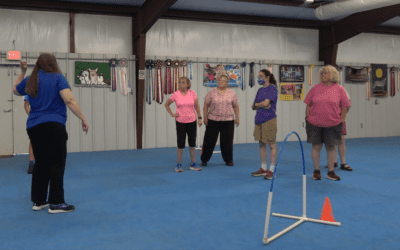
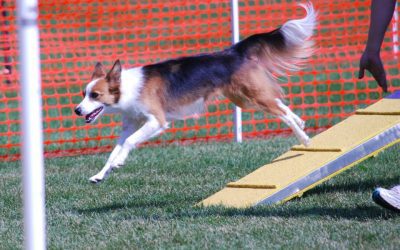
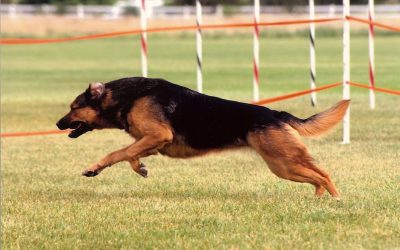
0 Comments